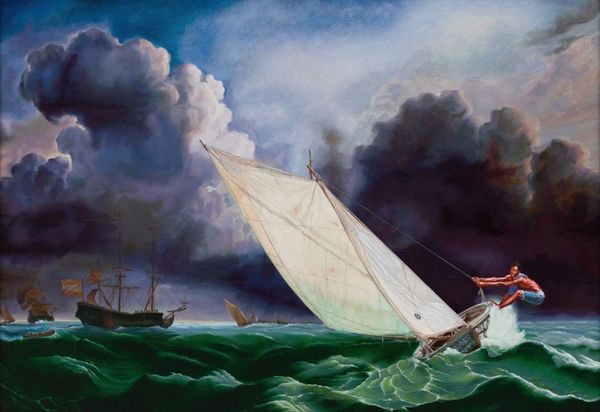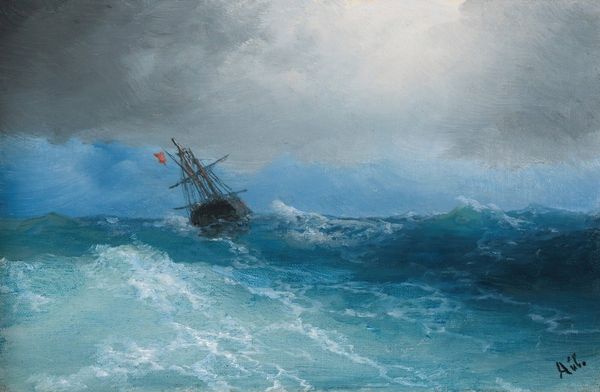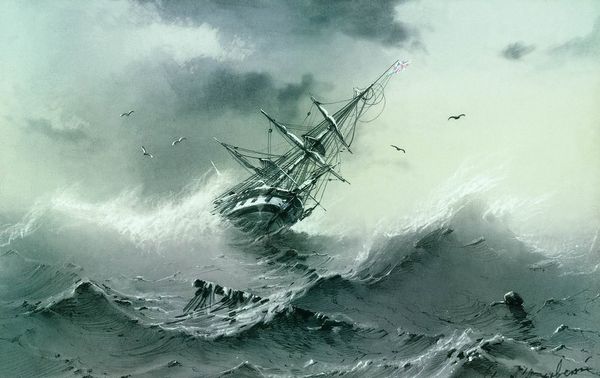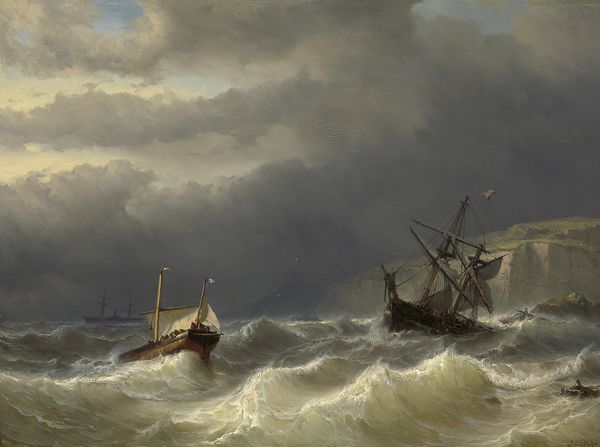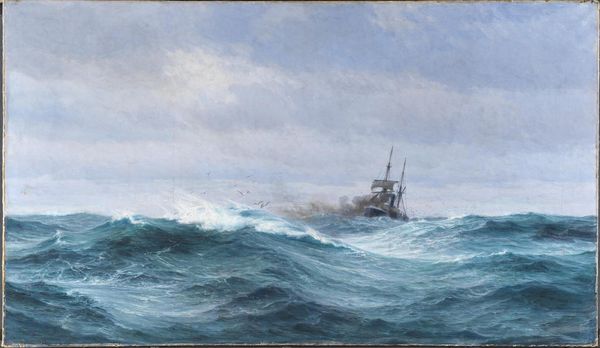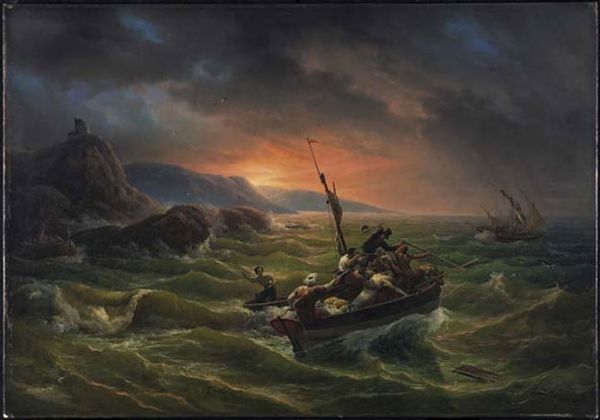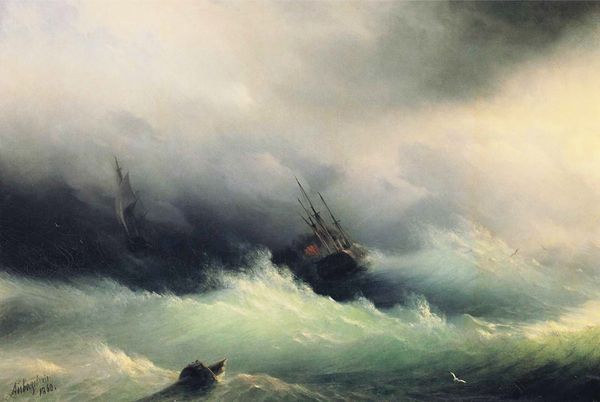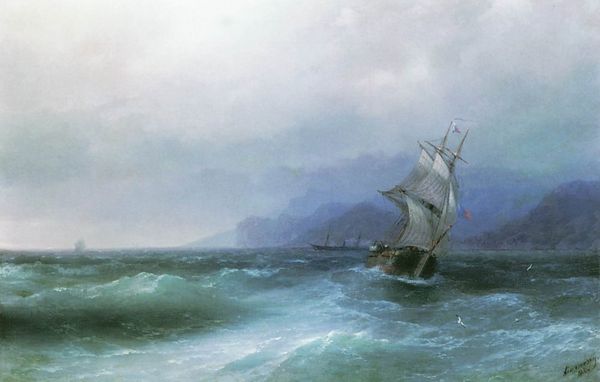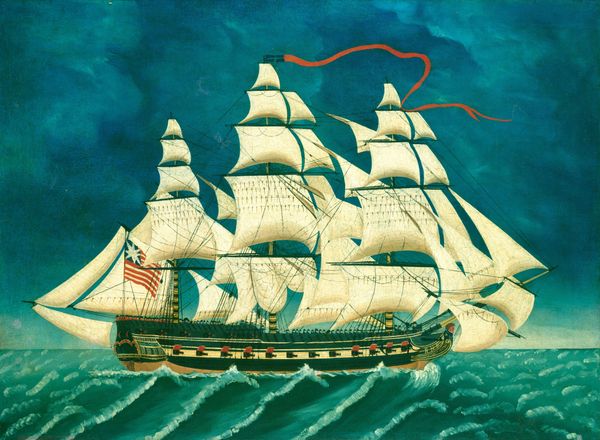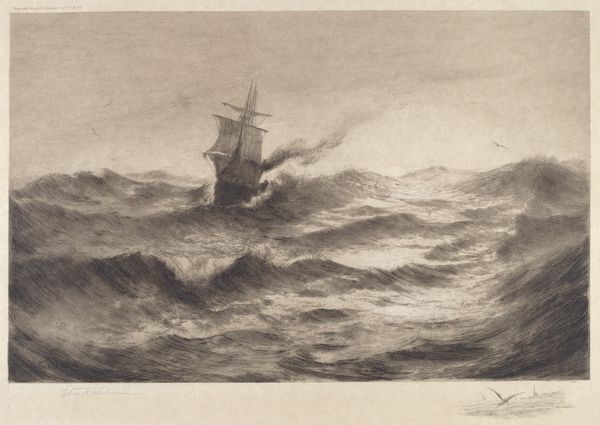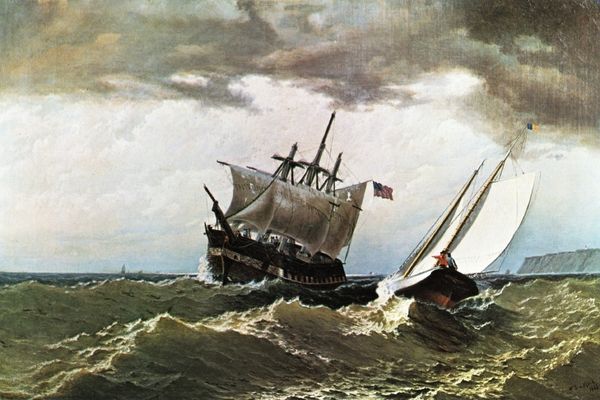
Dimensions: 54 x 65 cm
Copyright: Public domain
Editor: We're looking at Henri Rousseau's "The Storm Tossed Vessel" from 1899, rendered in oil on canvas. The way the waves are painted makes them feel almost solid, trapping the ship. What strikes you about this piece? Curator: As a materialist, I am drawn to the explicit labor involved in creating this "naive" landscape. The visible brushstrokes reveal the artist's process. Think of the socio-economic context. Who commissioned such art? What role did paintings like this play in constructing ideas of nation and empire at the turn of the century? This ship, battling the elements, can be read as a symbol of France navigating turbulent times. Editor: I see what you mean about the nation. I was just thinking about the material conditions in a more direct way, like the price of pigments available and how that affects color choices, and the textures he’s able to get with oil. Do you think there’s anything symbolic in the fact that he used oil paint, historically used to paint the elite? Curator: Absolutely! The *use* of oil, traditionally linked to high art and patronage, signals something significant when deployed by a self-taught artist. What narratives are enabled by this tension? And what existing systems of value does this tension upset? Editor: That's fascinating. I never considered the choice of medium as a political statement in itself. Curator: Precisely. Analyzing the materiality alongside its historical context opens new pathways to understanding not only the artist's intention, but the social forces at play during its creation. Editor: I’m definitely going to look at the materials used and their impact differently going forward! Curator: Excellent. By examining the materials and production processes, we see how deeply embedded art is within larger structures of power and consumption.
Comments
No comments
Be the first to comment and join the conversation on the ultimate creative platform.
